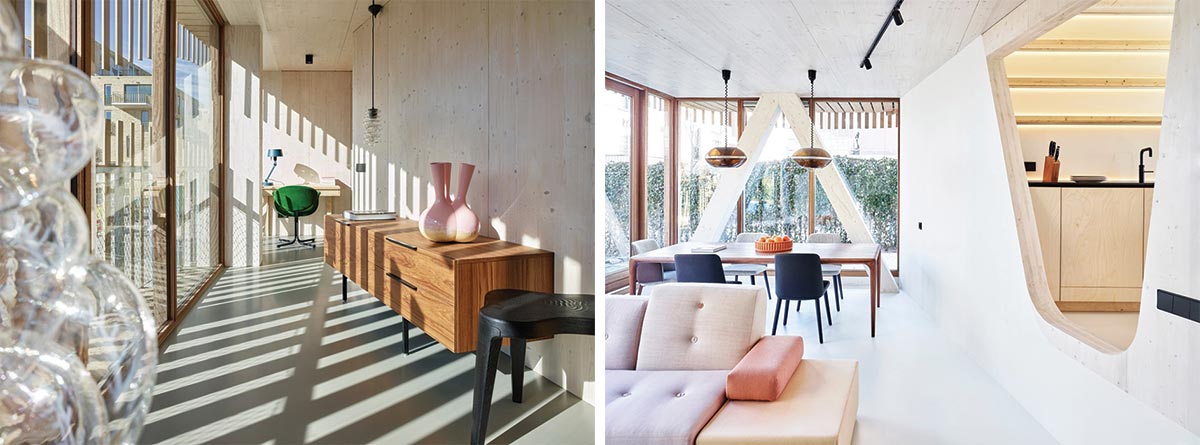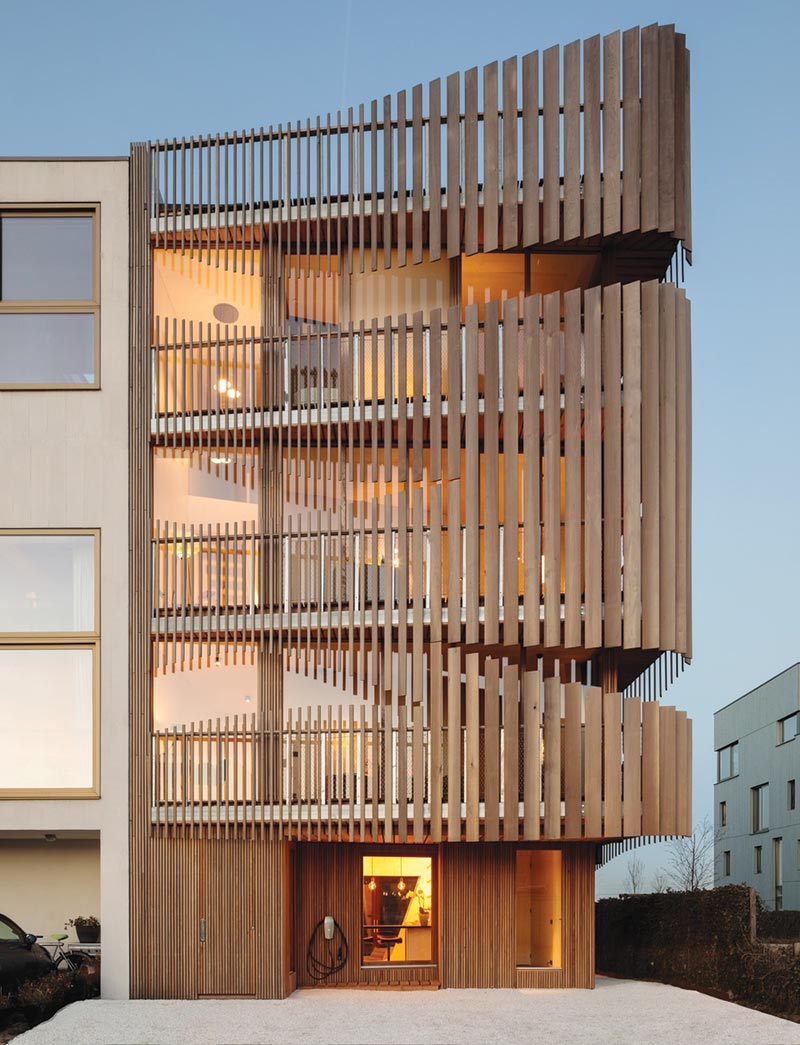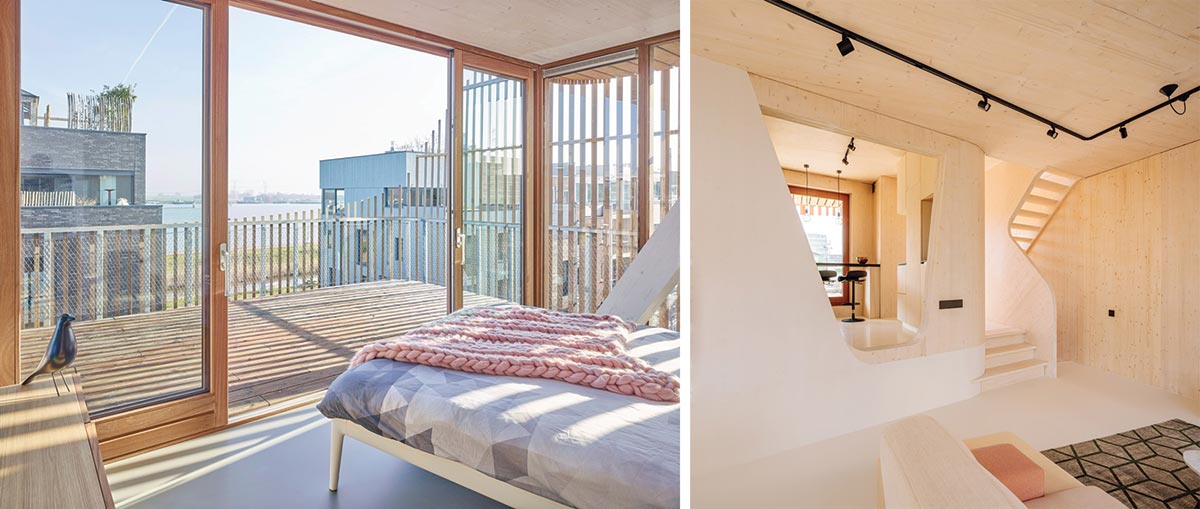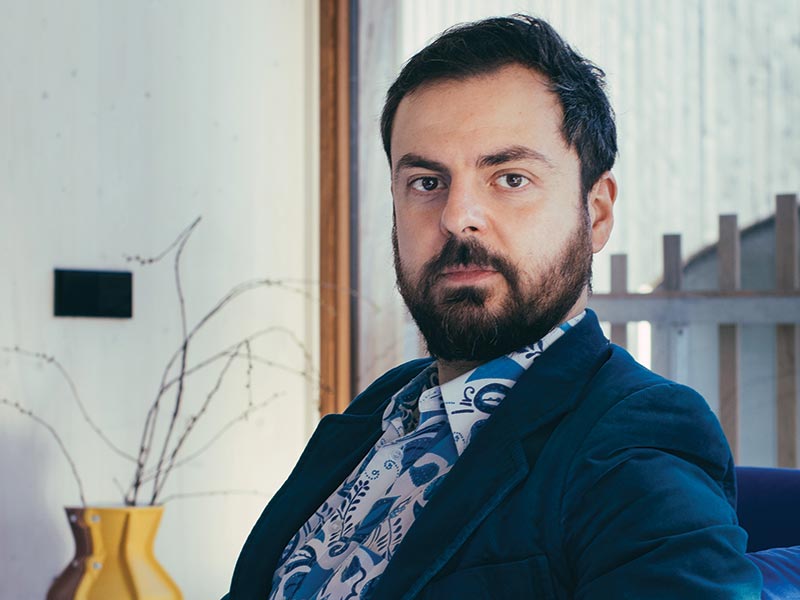
Freebooter is a small building located in the center of the island of Zeeburgereiland in Amsterdam, facing the Ij river, consisting of two duplexes of 120-sqm each. Sensitive to Dutch history, customs and culture, the project took the Netherlands’s maritime past as its starting point, and therefore has many references to wind, water, and sailing.
The main materials of the building, like a ship’s hull, were limited to wood, steel, and glass. The floor plan of each apartment, referencing a ship’s layout, is organic and free-flowing, with step-inclines to spaces that are designed to envelop and ‘unfold’ as the inhabitant moves through it. One of the most important features is its use of light. GG-loop conducted a year-round study of light conditions to create the optimal shape and positioning of the structure’s louvers. This parametric facade enabled the optimal distribution of light while simultaneously allowing for an appropriate level of privacy.
I see biophilic design as the key to truly innovative design, balancing the technical aspects of environmentally conscious construction with the qualitative, lived-in experience of an organic and natural space; Freebooter is a response to that
Giacomo Garziano - Founder, GG-loop
Photo courtesy: Juliana Gomez

The project is the result of in-depth research in the field of timber construction: the hybrid system in CLT and steel structure was developed throughout the design process to optimize interior space and time of construction. Comparative tests were made between a concrete structure and the CLT structure. The latter has proven to be the most qualitative solution, due to its structural performance and its optimization of construction time, but also its carbon footprint since wood naturally stores CO2. The impact on the cost of an efficient CLT structure is less than 10%, compared to a concrete solution.

The building’s energy consumption is close to 0 due to 24 solar panels on the roof, high-performance wall insulation, and glass walls, coupled with low-temperature underfloor heating and a mechanical and natural ventilation system. 98% of the wood used is PEFC certified. With 122.5 m3 of wood used, the building stores nearly 80 tons of CO2, offsetting nearly 700,000 km of exhaust gas from a mid-range car and the energy consumption of 87 homes in one year. Freebooter won the “Large Apartment of the Year” award at the Frame Awards 2020.
















